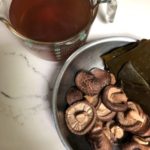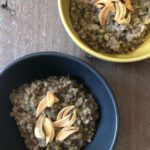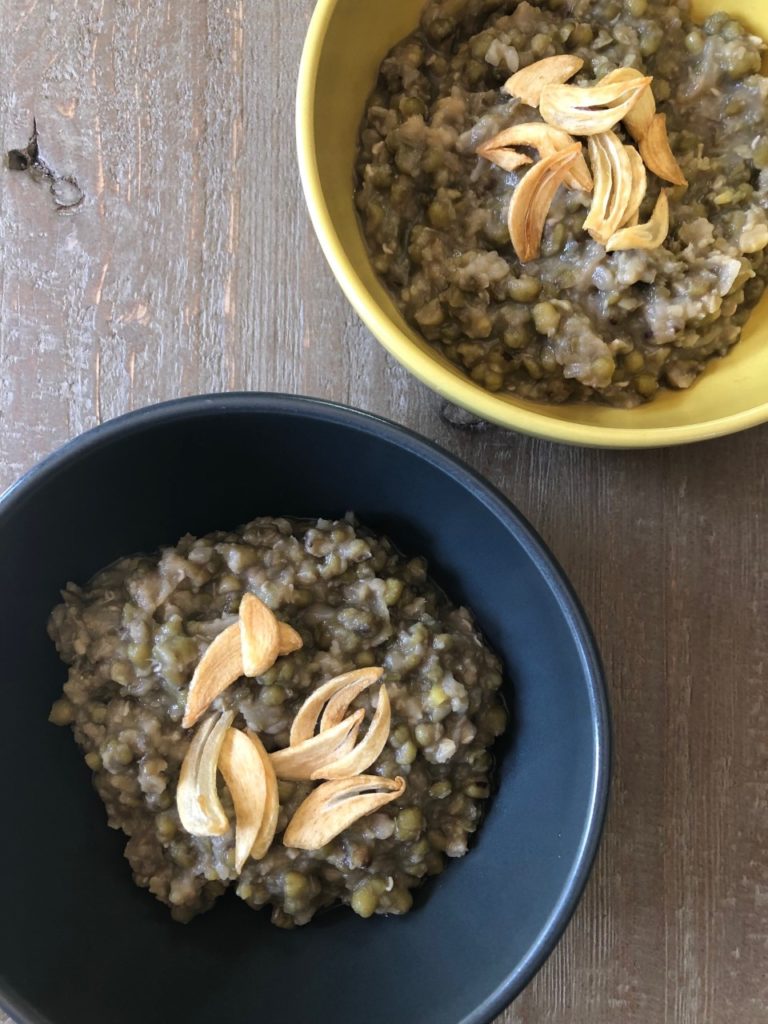
Upon hearing that I was making a cheffed-up version of munggo, a rich Filipino mung bean stew, my husband gleefully quoted lines from the Candygram scene in Blazing Saddles (1974). “Mongo like candy,” he said. The band Mungo Jerry had a song titled In the Summertime, he went on to point out. I didn’t know he was so full of mongo details. He also loves beans.
When I think of munggo, the little beans are top of mind because that is the star ingredient. Years ago, I learned about munggo stew from a Filipino friend’s mom, Mrs. Esperanza. I was intrigued by it. South Asian dals may be made with mung beans. But here was a classic dal-like dish from the Filipino kitchen. Mrs. Esperanza offered a recipe that was good and employed bittermelon leaves picked from the vines. She said the dish was healthy, though as I recall, she included pork in hers. It was delicious, albeit heavy. There are also versions of munggo that include shrimp or shrimp and pork.
I’ve been keeping an eye out for interesting munggo recipes, and Alvin Cailan presents one in his book, Amboy: Recipes from the Filipino American Dream. It’s smart and wonderfully satisfying with lots of umami built in via a shiitake mushroom broth. And, it’s vegan, if you’re cooking for folks with such eating preferences.
Filipino Culinary Nimbleness
Cailan is an incredibly gifted chef from Los Angeles who has a knack for dissecting classics and creatively reinventing them. Filipino cooks are incredibly versatile and capable, given their geography (about 7,640 islands comprise the Philippines!) plus history and experiences of being guest workers all over the world, serving in the U.S. military, and negotiating colonization. Filipino-Americans like Ken Concepcion, a former high-end chef and now a cookbook shop owner, impact food on many levels.
Through his food and in his book, Cailan demonstrates his Filipino creativity many times over. For example, Amboy offers up cheeseburger lumpia on page 98, pulled pork adobo on page 218, and a lentil twist on oxtail kare kare stew on page 316. He takes on banh mi, Croque Madame, and Japanese noodle dishes. He puts his Filipino-American imprint on mazemen, a preparation akin to a brothless ramen (second photo below).
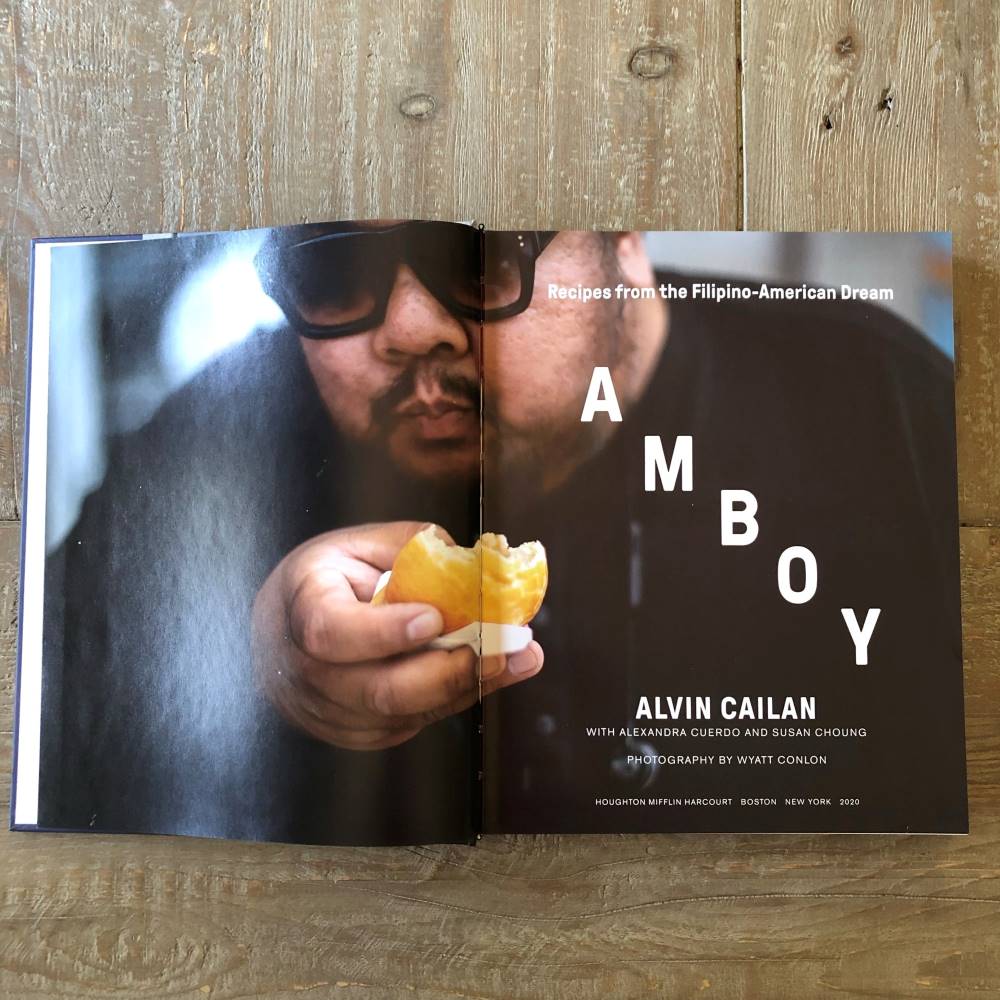
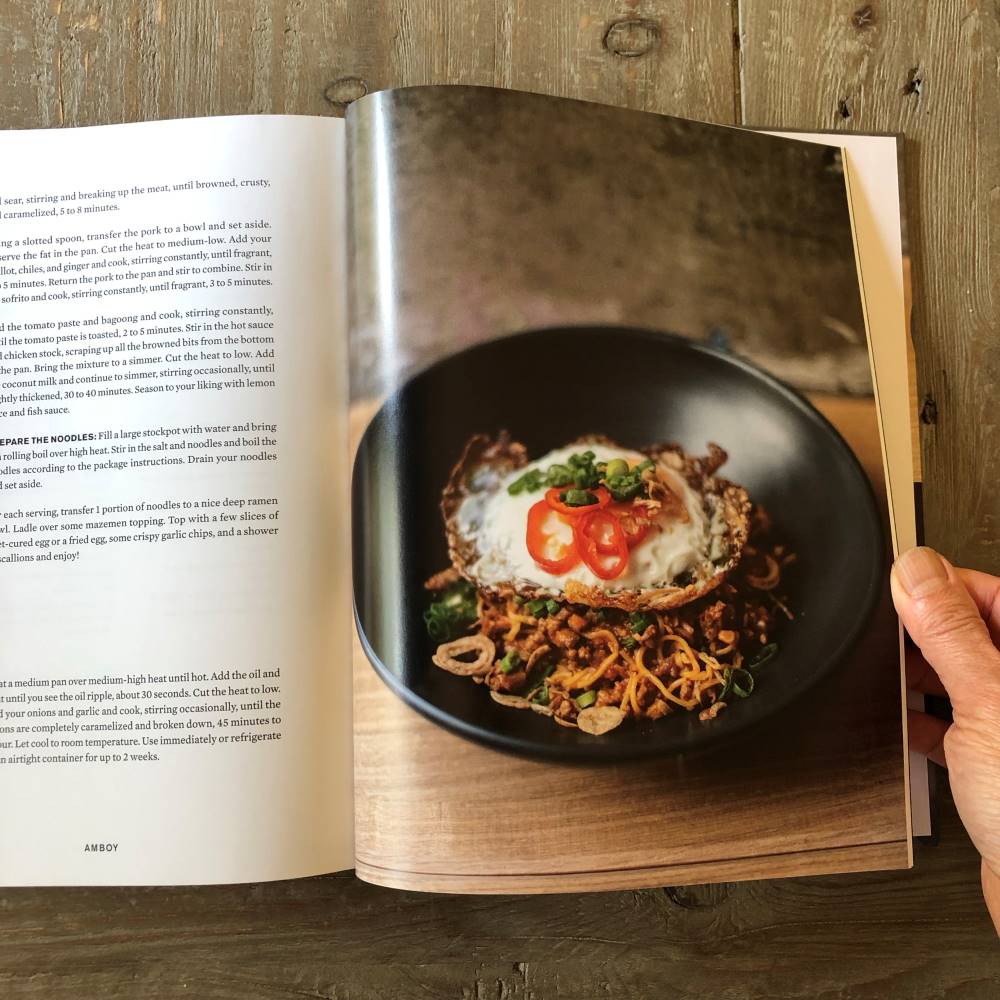
Amboy's Munggo
His memoir cookbook is an honest reflection of his life and he dispenses freely on what he loves and hates in food. Cailan admitted hating the earthy flavor of munggo when he was young. But then, he realized the little beans’ health benefits. He wanted to make mung beans shine, but without a ton of pork fat, as is often involved, he wrote. He eventually developed a healthy, brilliant iteration (the broth adds the savorines that pork would lend) and offered it as a side dish on his menus.
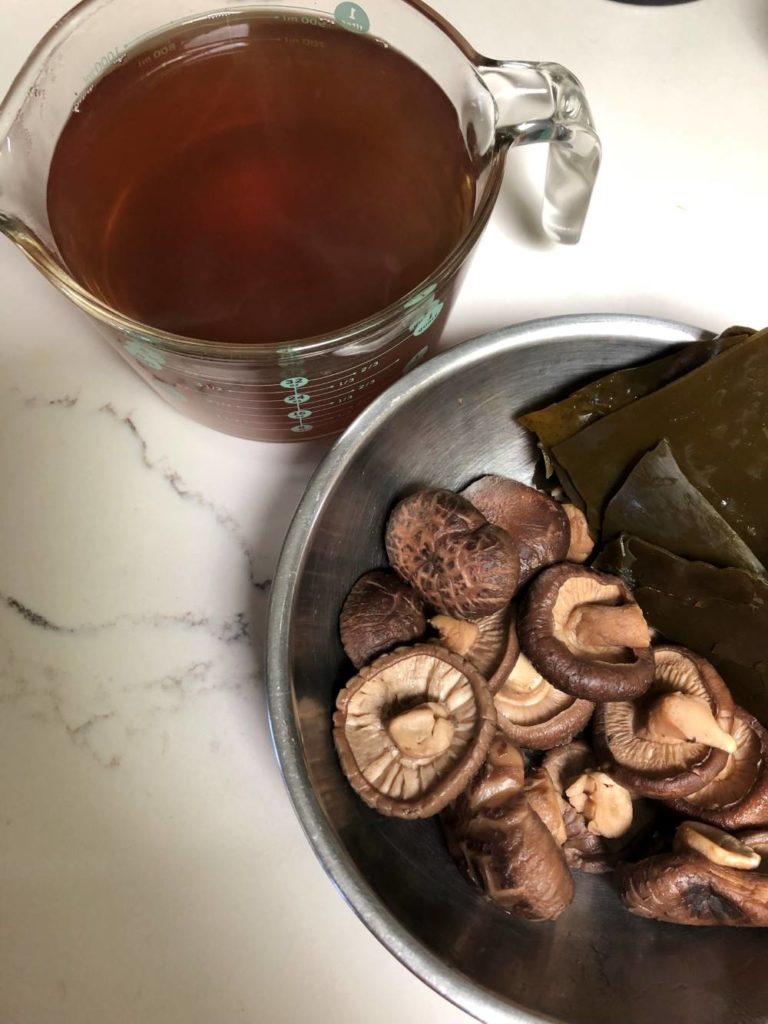
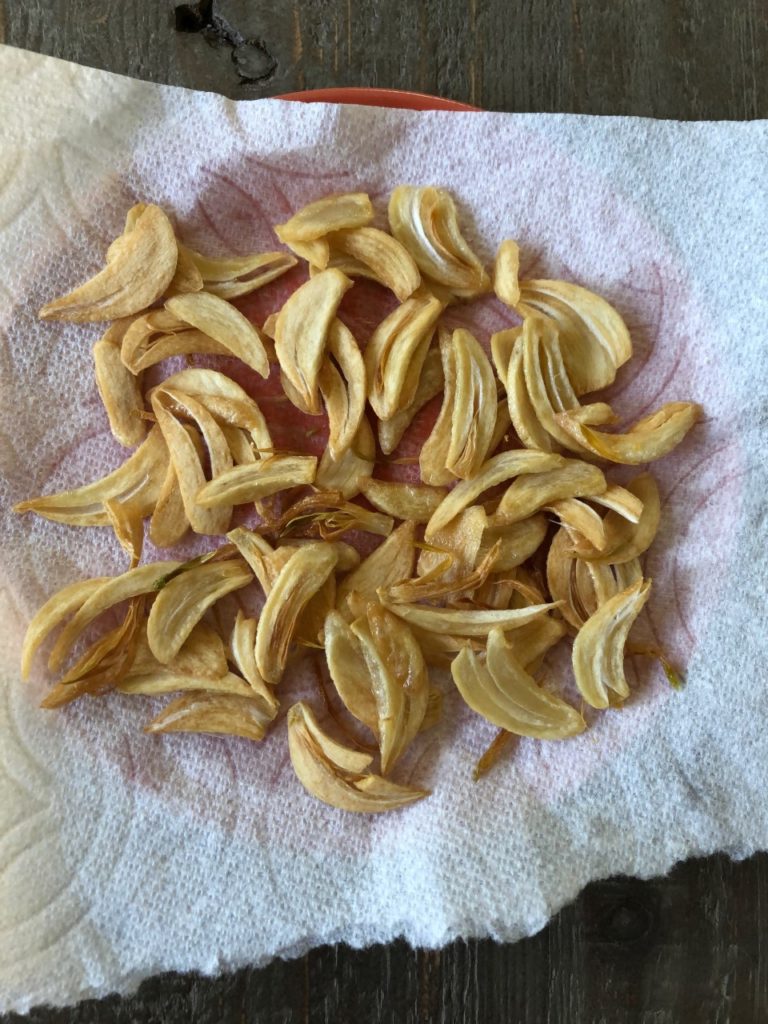
I like his recipe a lot but frankly, it’s cheffy. The shiitake stock yielded one gallon, but all I needed was 4 cups for the munggo stew (there was no pointer on freezing the stock). And the garlic chips required deep frying 8 thinly sliced garlic cloves. After I made the recipe the first time, I slightly adapted it for my home kitchen, and hopefully, yours too. Less time and smaller quantities of ingredients are involved. The recipe preserves Cailan’s gentle, balanced handling of ingredients.
Translating restaurant recipes well for home cooks isn’t easy. But that’s no reason to skip a cookbook. There’s lots of wonderful culinary ideas and stories in Cailan’s Amboy. If you’re into exploring modern Filipino food, it’s a terrific book to include in your library.
Mung Bean’s Healthy Power
In English, we know this legume as mung beans but the powerhouse ingredient is known as mongo, munggo, moong, and maash in parts of South and Southeast Asian and the Middle East. In China and Vietnam, they’re called green beans, đậu xanh in Vietnamese.
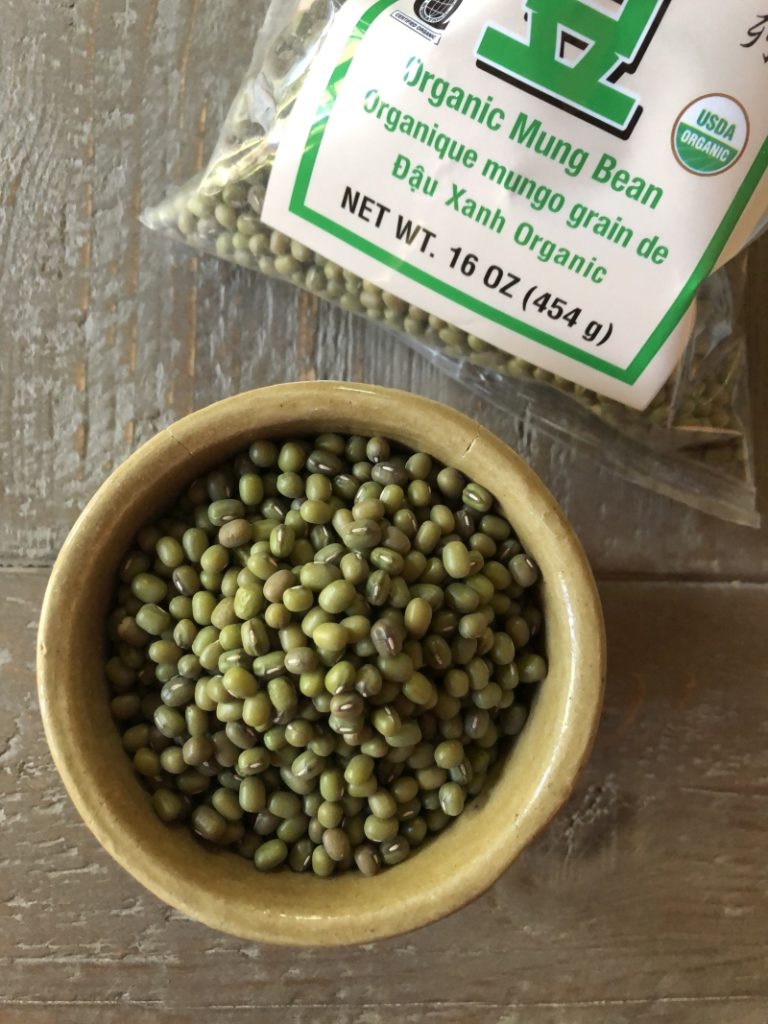
Domesticated in the Indian Subcontinent as far back as 1500 B.C., mung beans have long been known as a healthy food. According to traditional Chinese medicine, mung bean’s power to include cooling the body, improving skin, and detoxifying your system. The India Times recently summarized mung bean’s potential benefits, such as helping with digestion, weight loss, and diabetes, in this article.
Sourcing Mung Beans
At most standard supermarkets, mung beans are seen as the common bean sprouts. If you shop at a health food store, you’ll encounter green, unhulled mung beans. Venture to a Chinese, Southeast Asian or South Asian market, you’ll see three (3) mung bean options: unhulled; split with their green hulls; and hulled and split as small yellow legumes. Some stores sell organically grown hulled mung beans too.
Hulled, split mung beans are what I mostly use in my kitchen because the legume cooks up fast and buttery tasting. Steamed ground mung beans are used as fillings and toppings in Viet dumplings, old school sizzling rice crepes, sticky rice, cakes and sweet soups. The unhulled beans are most sprouted, as I’ve once done when I wanted homegrown bean sprouts. Now I have Cailan’s munggo to add to my mung bean repertoire.
When making this recipe, start with the stock since the mung beans need to soak for 2 hours or more, if you like.
How to Fry Garlic Chips
If you need and assist, watch this a video how-to on frying garlic chips. I made it for the laphet thoke (Burmese tea leaf salad) recipe but it's used here too!
Shiitake Mushroom Stock
Ingredients
- 3 ounces dried shiitake mushrooms
- 5- by 10-inch piece of kombu dried kelp, snipped into 3 or 4 pieces
- 8 cups water
Instructions
- Put the ingredients in a 3 or 4 -quart pot. Set over high heat and bring to a boil. Lower the heat to simmer until the liquid has reduced by nearly half, about 2 hours. The flavor will be very mushroomy and savory. Let cool for 15 minutes before filtering through a fine mesh strainer. Allow the mushroom to cool then squeeze on them to get any extra bits of liquid. Save the mushroom and seaweed for other uses; their flavor is mild but you can certainly eat them!
- You should have about 4 cups. If you have a lot more, boil the stock down. If you’re shy of the target amount, add water. The stock is ready to use, or to store (see below).
Notes
Munggo
Ingredients
- 2 cups dried whole mung beans with green hulls attached
- 1 tablespoon neutral oil, such as canola or peanut
- 1 medium yellow onion, finely chopped
- 3 garlic cloves minced
- 4 cups Shiitake Mushroom Stock (from above)
- 1 tablespoon minced fresh ginger
- 1 ½ teaspoons Bragg Liquid Aminos or Maggi Seasoning sauce
- Kosher or fine sea salt
Crispy Garlic Chips (optional)
- 8 garlic cloves, very thinly sliced lengthwise
- About ¼ cup neutral oil, such as canola or peanut oil
Instructions
- Rinse the mung beans, then put into a 3 or 4 -quart pot. Add water to cover by 1 inch then set aside to soak for 2 hours, or overnight. Drain and set aside.
- Wipe the pot dry, then heat over medium-high heat. Add the oil and when rippling, about 30 seconds, lower the heat to medium. Add the onion and garlic, then cook for 1 to 2 minutes, stirring, until translucent.
- Add the soaked mung beans, and cook for about 5 minutes, stirring. Add the stock and keep stirring to scrape up any browned bits from the bottom. Add the ginger, increase the heat to high, then lower the heat to simmer for 35 to 50 minutes, until the beans have softened and are practically mushy.
- Meanwhile, make the crispy garlic chips. Put the garlic in a small saucepan and pour enough oil in to cover. Heat over medium-low until gently sizzling. Let fry for several minutes, until pale golden. They won’t be crisp. At this point, pick up the pan and swirl it to continue cooking the garlic but slowing things down so you may monitor progress. When a shade darker, pour through a mesh strainer set over a small bowl. Allow the garlic to rest a few minutes then spread out on a paper towel to finish cooling and crisping.
- When the munggo is done, there should be about half the amount of visible liquid. (If the mung beans are too firm and you don’t have liquid in the pan, add water and continue simmering.) To finish the flavor, stir in the liquid aminos. Taste and add more or season with extra salt. Ladle into shallow bowls and garnish with garlic chips. Serve immediately.













